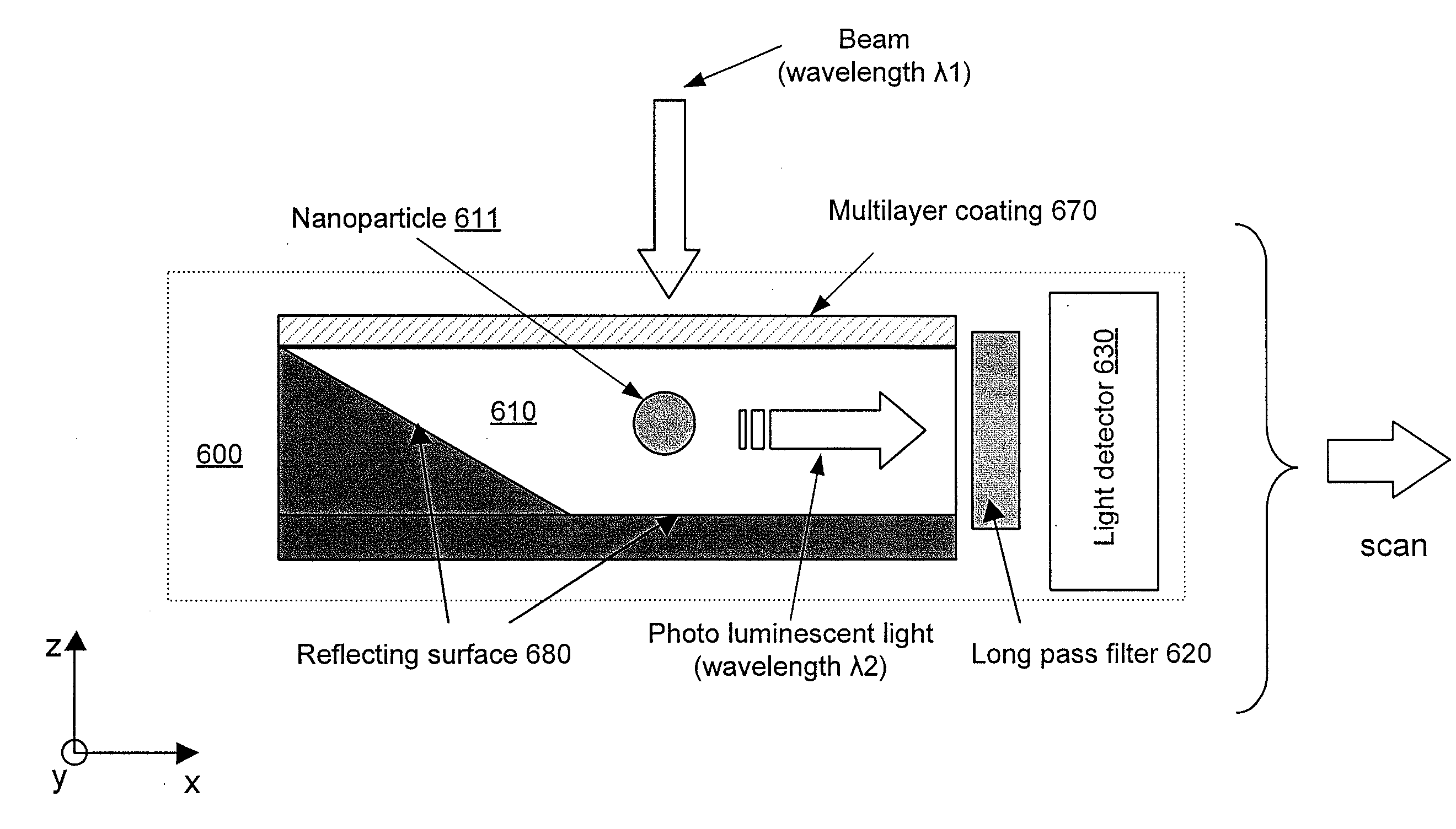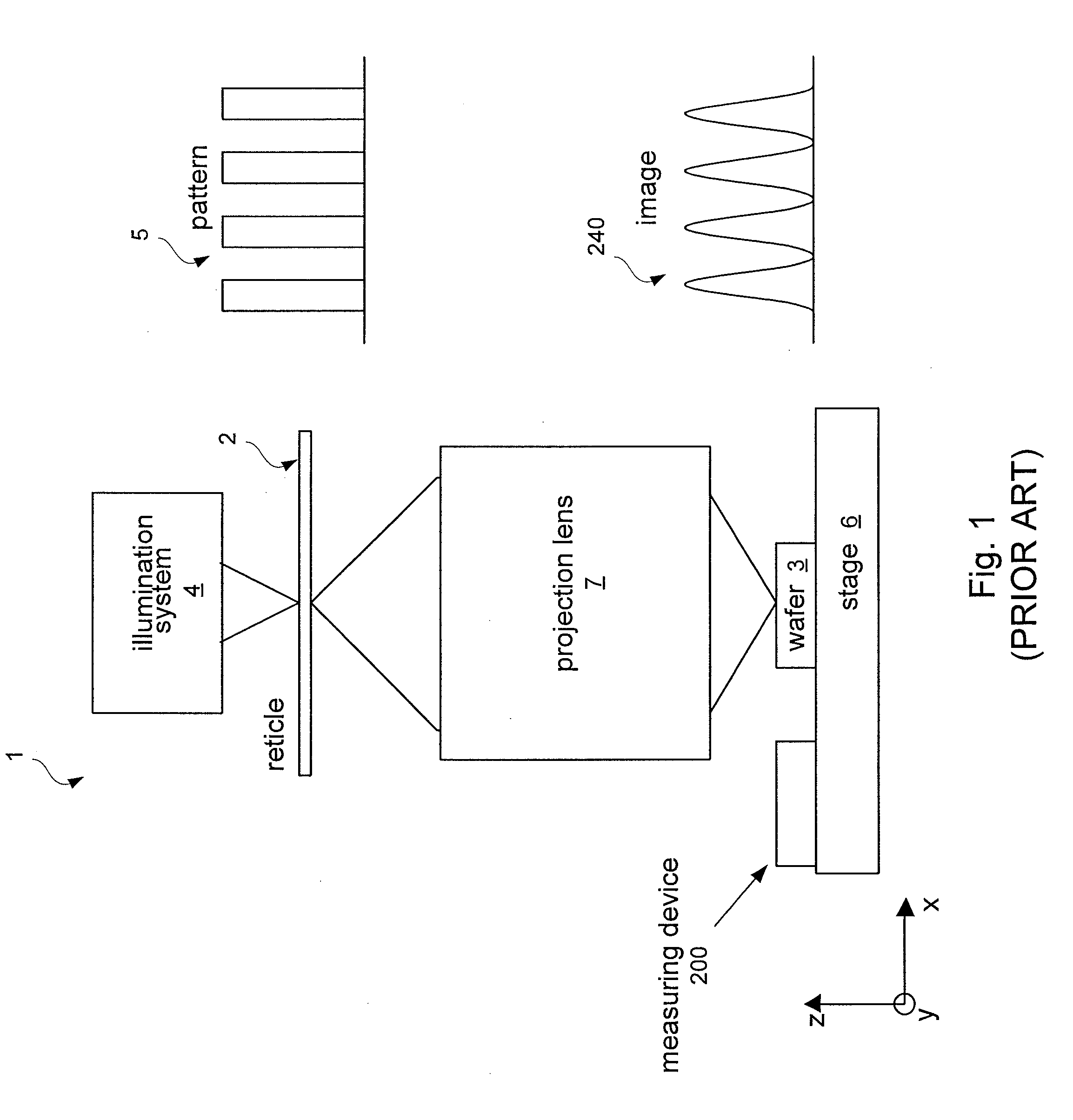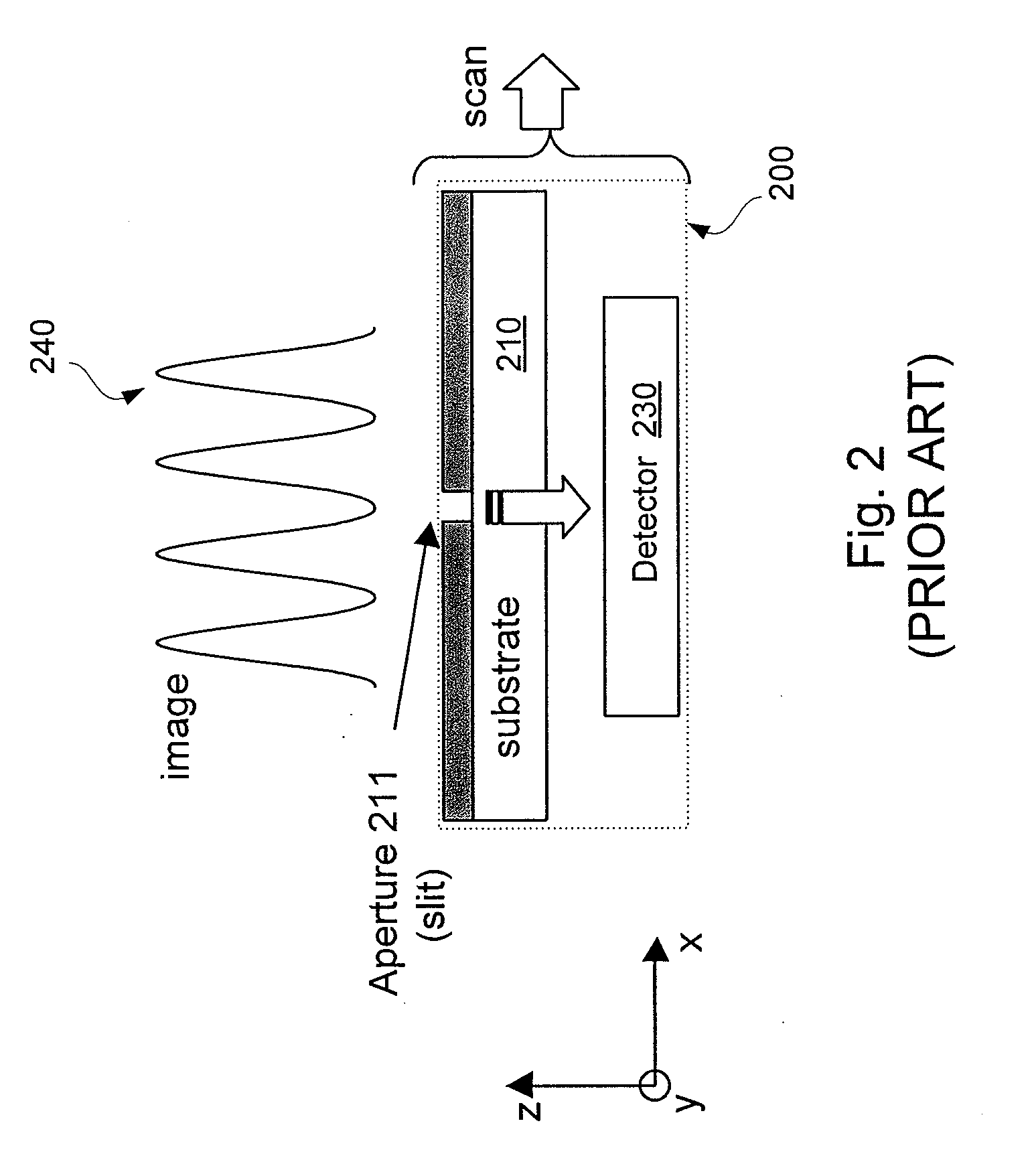Device for measuring an aerial image produced by an optical lithography system
an optical lithography system and aerial image technology, applied in the field of aerial image measurement, can solve the problems of inaccurate aerial image profiles created from those measurements, affecting the measurement of aerial images, and affecting the imaging performance of optical lithography systems, so as to reduce or substantially eliminate the dependence on incident angle and polarization sta
- Summary
- Abstract
- Description
- Claims
- Application Information
AI Technical Summary
Benefits of technology
Problems solved by technology
Method used
Image
Examples
Embodiment Construction
[0036]FIGS. 5A shows the configuration of an aerial image measuring device 500 according to embodiments of the invention. Aerial image measuring device 500 includes a substrate 510, a light detector 530, and a filter 520 positioned between substrate 510 and light detector 530, as illustrated in FIG. 5A.
[0037]Nanoparticles 511 are embedded in substrate 510, and arranged in a column along the Y-axis, as shown in FIG. 5B (which depicts a top view of measuring device 500 of FIG. 5A). Nanoparticles 511 are arranged within substrate 510 in a manner such that individual nanoparticles 511 do not touch each other.
[0038]Nanoparticles 511 are between 5 nm and 20 nm in diameter, and are smaller than both the illuminated wavelength λ1 and a feature size of aerial image 540. In optical lithography systems, such as the system shown in FIG. 1, that use ArF excimer lasers for illumination, the illuminated wavelength λ1 is typically 193 nm.
[0039]Nanoparticles 511 can include, for example, substantial...
PUM
 Login to View More
Login to View More Abstract
Description
Claims
Application Information
 Login to View More
Login to View More - R&D
- Intellectual Property
- Life Sciences
- Materials
- Tech Scout
- Unparalleled Data Quality
- Higher Quality Content
- 60% Fewer Hallucinations
Browse by: Latest US Patents, China's latest patents, Technical Efficacy Thesaurus, Application Domain, Technology Topic, Popular Technical Reports.
© 2025 PatSnap. All rights reserved.Legal|Privacy policy|Modern Slavery Act Transparency Statement|Sitemap|About US| Contact US: help@patsnap.com



